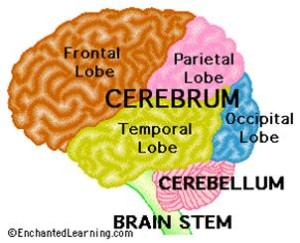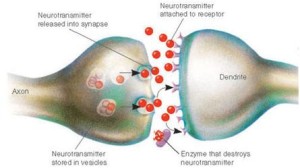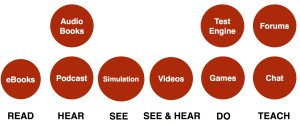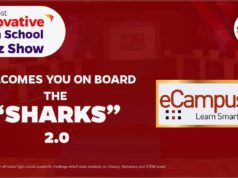It has been established since antiquity that the human brain is the seat of learning. But how does the brain naturally learns? What if you knew the right way to feed your brain with information? Could that improve knowledge acquisition, retention, and recall rates?
These are the questions the eCampus Learn Smarter Program is answering.
The brain consist of three principle parts – stem, cerebellum and cerebrum (see Figure 1). It then acts as a dense network of finer pathways consisting of approximately 100 billon neurons. Out of the three principle parts of the brain, higher-ordered functions like memory and reasoning occur on at the Cerebrum making it the most important in learning. Each area of the cerebrum specialised in a function – sight, hearing, speech, touch, short-term memory, long-term memory, language and reasoning abilities which are most important for learning.

For learning to occur, sensory information is transmitted by synapses (see Figure 2) through a network of neurons and stored temporarily in short-term memory. From there the information is carried to through the neural pathways to the structural core, where they are compared with existing memories and stored in long-term memory, the vast repository of everything we have ever experienced in our lives.This instant process is not always perfect, some of the information gets degraded. That’s why many of our memories are incomplete or includes false portions that we make up to fill holes in the real memory.

When two neurons frequently interact, they from a bond that allows them to transmit more easily and accurately. This leads to more complete memory and easier recall. Similarly, two neurons that rarely interacts, the transmission is often incomplete, leading to either a faulty memory or no memory at all. (Source: University of California Irvine’s Centre for Neurobiology of Learning and Memory)
The memory is strengthened by multiple sensory inputs (read, listen, watch, practice, discuss). For example, if we both hear and see something, we are more likely to remember it than if we only hear it. (Source: Martinos Center for Biomedical Imaging, Department of Radiology, Massachusetts General Hospital and Harvard Medical School)
Memory and recall especially when learning new things is also strengthened by frequency and recency. The more we practice and rehearse something new and the more recently we have practiced, the easier it is for our brain to transmit these experiences efficiently and store them for ready access later. This process is called fluency. (Frequency + Recency = Fluency)
The eCampus learning experience was designed to ensure that learning engages all the senses and taps the emotional side of the brain, through methods like humor, storytelling, group activities and game. Emphasis on the rational and logical alone does not produce powerful memories for higher recall rates during examinations or when you need to apply the acquired knowledge. (see Figure 3).

When you experience an emotional reaction to something – fear, anger, laughter or love – that emotion strengthens you memory dramatically and becomes a part of it. Research shows that in recalling memories, subjects who had experienced an emotional reaction were far more likely to remember the even and with higher accuracy than this who simple witnessed an event without any emotional attachment. That explains why highly emotional events – birth, marriage, divorce and death – become unforgettable.
Also by making eCampus Mobile (available on Android, Blackberry, iOS, and Windows) thus putting the classroom in the palm of the learner will increase access, leading to a higher frequency and recency, hence fluency is achieved by the learner.
In order to validate that eCampus’ learning experience meets its design expectations (multiple sensory and fluency learning experience). The eCampus Learn Smarter Program was initiated in February 2015 to facilitate the piloting of eCampus with selected remedial educational institutions who are preparing students for the Basic Education Certificate Exams (BECE) and/or West African Secondary School Certificate Exams (WASSCE).
The program seeks to correlate the points earned by students whiles using eCampus with their final examination results from the West Africa Examination Council (WAEC). Students with high eCampus points are expected to score above WAEC′s C grade point. Likewise students with low eCampus points are expected to score below WAEC′s C grade point.
In June 2015, Vibe Pre-University College in Kumasi became the first remedial institution to sign up for the eCampus Learn Smarter Program. Preparations are far advanced to start the program with the next intake of student. The validation of the eCampus learning experience will give the eCampus Team new ideas on how to improve on the technology in pursuit of the company’s ultimate goal to innovate, transform and change education delivery across Africa.
Sign Up your institution for the eCampus Learn Smarter Program | Download the App








